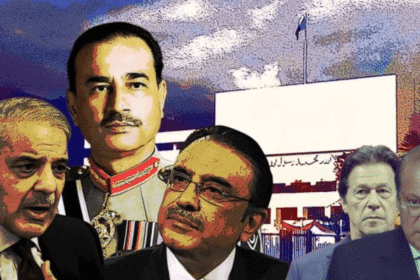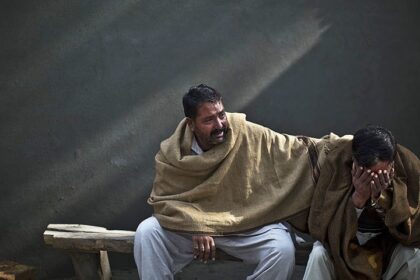As Pakistan enters yet another IMF-backed rescue, the nation finds itself under the technocratic thumb of a soft dictator. No tanks, no martial law, but spreadsheets, conditionality, and stringent reform benchmarks. This is a dictatorship nonetheless, one that erodes the very essence of sovereignty, deepens inequality, and hampers genuine development.
Ironically, when the International Monetary Fund intervenes, it brings no armies, stages no coups and issues no proclamations. However, it quietly replaces national sovereignty with economic stewardship dictated from a close distance. For Pakistan, what began as a periodic form of financial assistance has now ossified into a system of externally enforced governance that is not only technocratic in design but also politically insulated as well as structurally dominant. The country’s fiscal levers, energy pricing, welfare design, and taxation priorities are no longer exclusively decided in Islamabad. Rather, they are negotiated and frequently determined in Washington. Is it a tragedy endured or an institutionalised doom?
Essentially, it is no longer about loans or economic correction but about remote governance. Under this guise of fiscal rectitude is an unelected regime operating that ‘softly’ imposes policies. It is the perennial bailout cycle that continues to deepen dependency, but this brings another perspective into view: that Pakistan’s entanglement with the IMF is not sporadic; it is institutional. Since 1950, the country has approached the Fund at least 25 times, averaging one bailout every three years. And it never ends. Though each cycle is framed as the last, a point of an urgent fix before self-reliance, none has delivered long-term stability. From standby arrangements to the Extended Fund Facility (EFF) and most recently, climate-resilience tranches, Pakistan’s economic architecture remains beholden to IMF prescriptions.
The $7 billion EFF approved in September 2024, followed by an additional $1.3 billion in March 2025 for climate resilience, exemplifies this entrapment to the fullest. These funds were far from empowering reform; they legally bind the state to specific fiscal targets and interest rate hikes alongside subsidy withdrawals. It proves, in many ways, how sovereignty is ceded not in speeches, but in signatures. And in turn, this austerity without solidarity only leads to deepening social scars. It is so because the human cost of IMF-led austerity is not incidental but systemic. Between June 2019 and 2022, gas prices rose by 840%, while electricity tariffs surged by 110%. These are not only abstract numbers; they reflect unbearable pressures on everyday households.
For much of its postcolonial existence, Pakistan has been trapped in an economic déjà vu. With every downturn, the country returns to the same prescription, which is to reach out to the International Monetary Fund, accept a bailout, and recommit to the ever-elusive goal of “structural reform.” The optics are always the same with high-level meetings, press releases, budget tweaks, and slogans of fiscal discipline. But beneath this extremely ritualised choreography lies a very troubling reality: the patient never recovers. The wound never closes. Instead, the country remains in a chronic state of economic triage, stabilising but somehow never strengthening.
This is not mere misfortune. It is the logical outcome of a system, in its entirety, built not to rescue, but to contain. Pakistan’s relationship with the IMF, which is now over four decades old, has grown from an occasional engagement to an embedded dependency. At its core, this dependency represents nothing more than a crisis of sovereignty. It is not just about economics; it is about who gets to decide Pakistan’s future and on what terms.
Essentially, the IMF’s playbook is uniform and predictably technocratic. Governments in distress must cut fiscal deficits, raise revenue, remove distortions, and improve “efficiency.” On paper, this does make sense. No one disputes the need to reduce waste, broaden the tax base, or fix failing state enterprises. But in practice, the reforms are carried out with brutal asymmetry, and in Pakistan, they have hardened into a permanent architecture. That too is a heavily bloated one. In essence, austerity was once intended as a temporary corrective, but now it has become structural. However, year after year, governments raise energy tariffs, cut development spending, freeze public sector wages, and make promises of privatisation. These steps rarely touch the entrenched elite. Real estate tycoons, feudal landholders, and politically connected conglomerates remain shielded from serious taxation. Instead, the axe falls on the salaried middle class, small traders, and the poor, who bear the costs of inflation, subsidy withdrawal, and regressive taxation.
So how can it be that in this landscape, a reform will feel like progress? It feels more like punishment. And because the process is externally driven and internally resisted, it lacks legitimacy. Resultantly, we are left with social fragility instead of structural resilience. In turn, this converts the concept of stabilisation into a myth because, in the end, all macroeconomic forms of stabilisation come forth as short-lived victories that are achieved through painful tradeoffs. Behind every improved spreadsheet is a story of shrinking consumption, crumbling healthcare, unaffordable electricity, and schools with no teachers. At its core, this dissonance becomes pervasive, and the ‘recovery’ is extractive because it is achieved by transferring the burden downward onto the least powerful. When inflation rises, subsidies are slashed, and currency devalues, the pain is not abstract but immediate and visceral. Children drop out of school. Medicine becomes a luxury. Hunger becomes a daily negotiation and all of the above. The tragedy is that these sacrifices do not build lasting strength.
What makes this dynamic even more corrosive is its impact on democratic governance. In theory, sovereign nations negotiate with the IMF as equals. But in practice, developing countries like Pakistan are forced to accept prepackaged reform templates designed for compliance rather than consultation, and it becomes a loop with no exit.
Each new IMF program very subtly rewires domestic priorities. Budget ceilings are set with an eye to IMF approval. When it comes to energy prices, they are revised to meet quarterly targets. When it’s about legislation, it is amended to satisfy structural benchmarks. Thus, over time, policymaking becomes less about public deliberation and more about external validation. Parliament debates policies that have already been vetted in Washington. In actuality, fiscal autonomy becomes a technicality. Hence, this external influence breeds distrust at home with political capital eroding.
Contrastingly, this obedience comes at a cost of climate repercussions. Pakistan is one of the most climate-vulnerable countries in the world. Floods, droughts, glacial melt, and water scarcity threaten lives and livelihoods at scale. Addressing these challenges requires massive investment in climate adaptation that is related to reforestation, smart agriculture, water infrastructure, renewable energy, and disaster preparedness. And yet, under the weight of IMF-imposed austerity, the fiscal space to fund such projects barely exists. Even where the IMF includes climate goals in its programs, these are often structured through loans, adding to the very debt burden that undermines resilience. In effect, Pakistan is being asked to solve an existential crisis while being handcuffed to a failing economic model.
Similarly, the way forward towards economic sovereignty does not lie in isolationism or antagonism. Pakistan does not need to reject the IMF in totality, but it must stop surrendering its developmental imagination. The real challenge is not to eliminate borrowing but to build the required capacity to negotiate on equal footing.
In this view, a genuine reform agenda would begin by overhauling the tax system to make it equitable and enforceable. It would reform state enterprises not by gutting them, but by restructuring them with transparency, oversight, and accountability. It would redesign subsidies to be targeted and productive, supporting the vulnerable rather than the politically connected. Equally critical is the need for investment in what makes a country strong: universal healthcare, quality education, and robust local governance. Relatively, financial innovation can also play a role. Pakistan must explore alternatives to conventional borrowing: climate finance, green bonds, Islamic sukuk, and diaspora investment channels. But none of this will matter without political continuity. It is so because economic policy cannot be rebooted with every electoral cycle. Reform must transcend party lines and survive changes in government. That means building political consensus, protecting civil service autonomy, and ensuring that policymaking is embedded in institutional memory, not personal charisma.
Conclusively, Pakistan’s crisis is not a mystery. It is the predictable consequence of a model that outsources responsibility, evades accountability, and privileges external optics over internal coherence. The presence of the IMF is not the problem in itself. The real tragedy is that Pakistan has allowed itself to be governed in its image.
It is high time to rethink what reform means. It must no longer be code for austerity. It must mean inclusion, resilience, and equity. It must mean policies that are owned by the people they affect. It must mean growth that does not come at the cost of dignity.
















